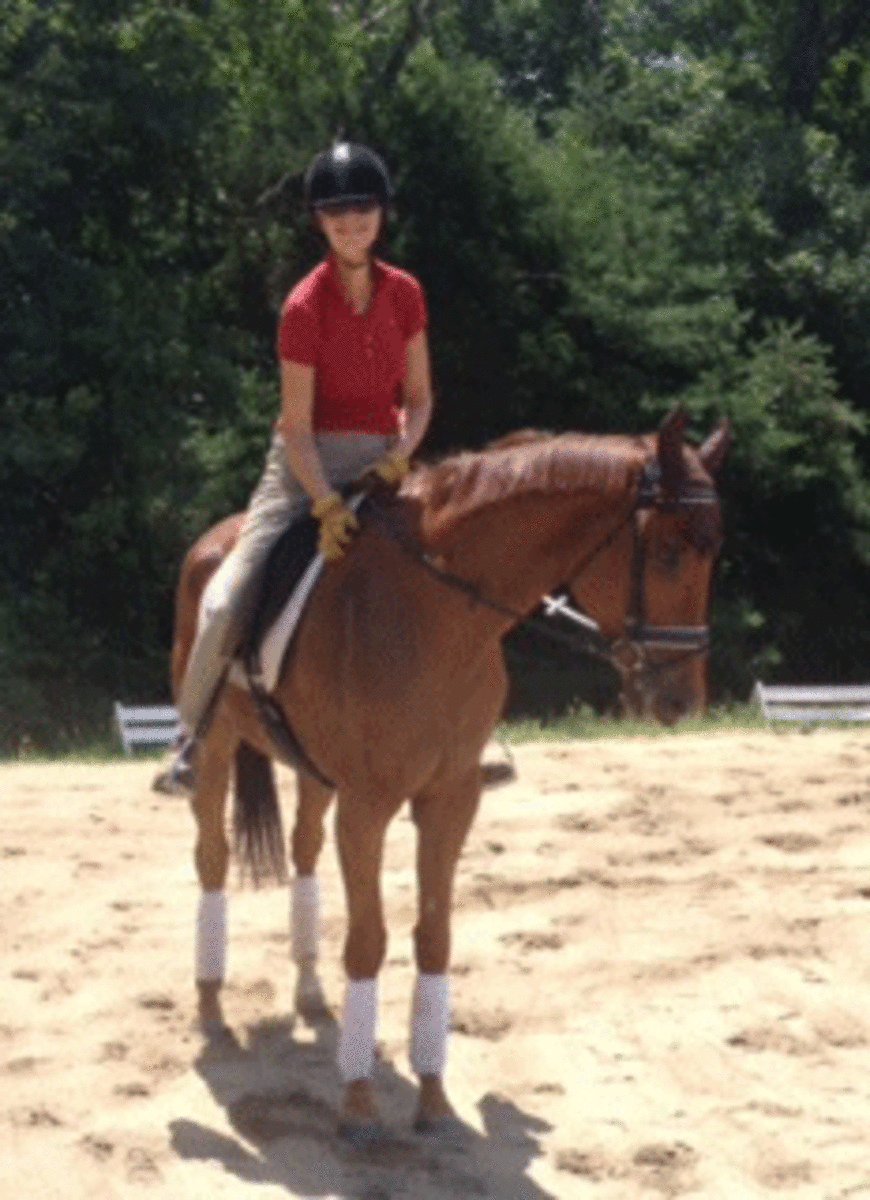Alrighty, then…I have done everything I possibly can to prepare Forrest for his first ride undersaddle: given him three months to be “let down,” allowed his hooves to expand and achieve correct angles, introduced him to the mounting block, longed him in side reins for eight weeks to develop his topline, taught him jaw flexions from the ground, had his teeth seen and found a perfectly fitting saddle. Even my arena appeared to have had, er, an augmentation done to bring in needed sand.

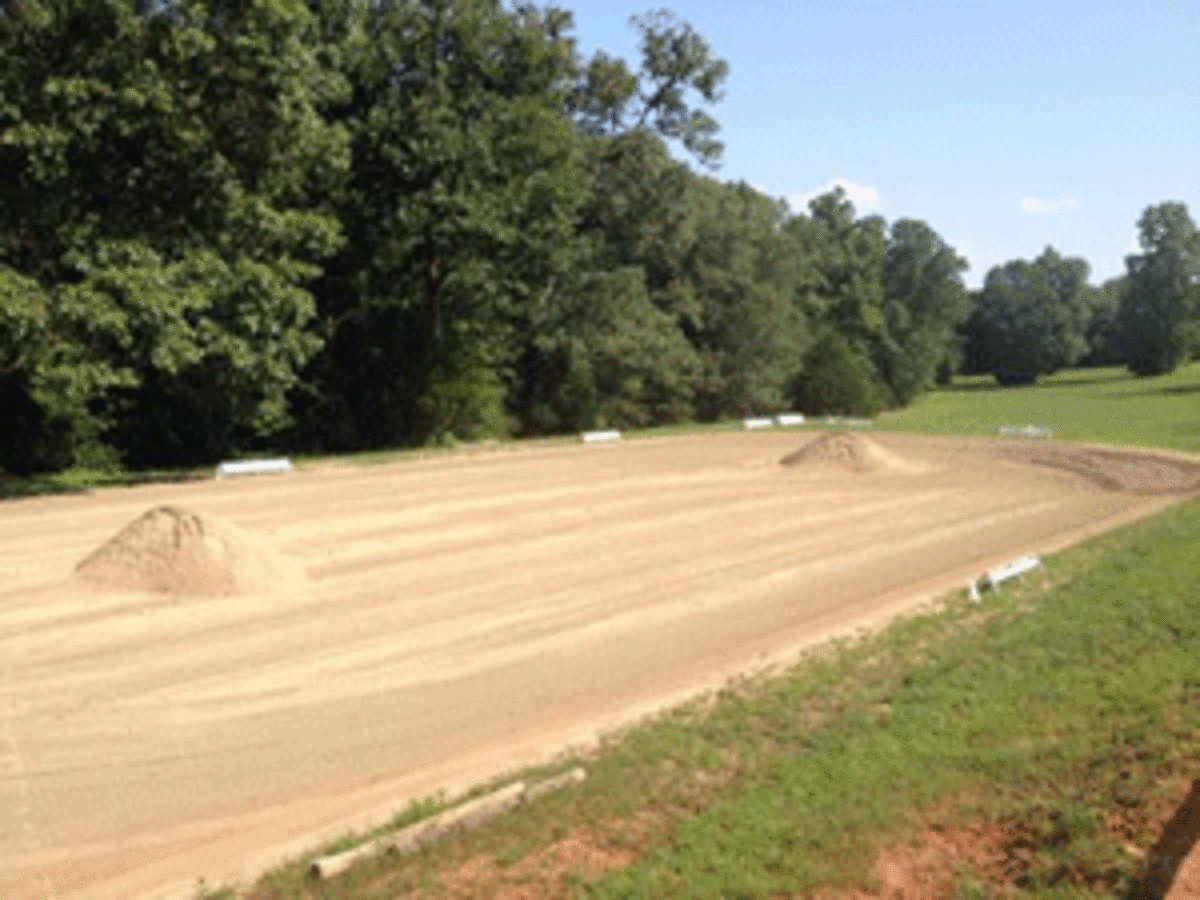
Because so many OTTBs end up being such level-headed guys while others might experience post-traumatic stress from the chaos of the track, Lisa Molloy, of Rerunottb.com, reminds those of us who adopt these horses to “prepare for the worst but expect the best.” I really have tried to follow this advice but have to admit that, when Forrest’s 4-year-old, baby-brain compels him to leap and bronc from time to time on the longe, I know darn well that he could fling me into a new zipcode.
So! To avoid looking like “The Flying Nun,” suited up in Romfhs, the thing to do, in my mind, is to try and eliminate all scenarios in which I could end up injured and Forrest could have a stressful experience. On a warm, humid, late Friday morning, after longeing him first (in which he bucked like a maniac), I, donning helmet, breeches, gloves and jodhpur boots (short boots allow me to feel far more nimble backing a horse in case I need to bail), as well as my Aflac insurance policy number tucked in my back pocket, I led Forrest to the mounting block, patted him, gathered the reins and, holding my breath, placed my left foot in the stirrup.
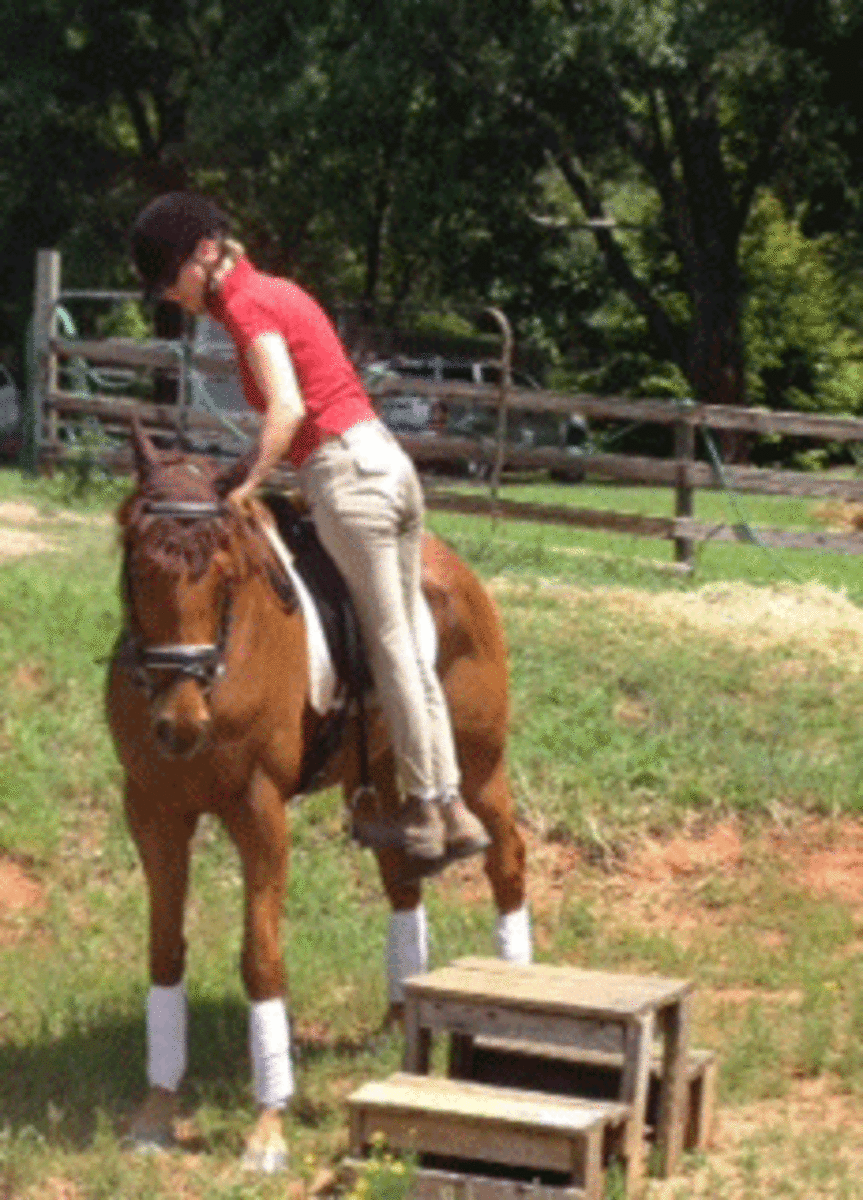
So far, so good. I stood in the stirrup for a few moments to see if he would react. He didn’t. I stepped down, patted him, and stood in the stirrup again. He never flinched.
The last thing I want to do is radiate any sort of tension and I find a good way to express total calm is to sing, so with Forrest being subjected to “Embraceable You,” I swung my leg slowly over and picked up the other iron.
What a good boy! He stood like a rock. From here I applied the jaw flexions I had taught him weeks ago, and, hoping they would translate undersaddle, was pleased that they did. Forrest immediately chewed and swallowed, mouthing the bit and relaxed his neck as I continued to serenade him with Gershwin.
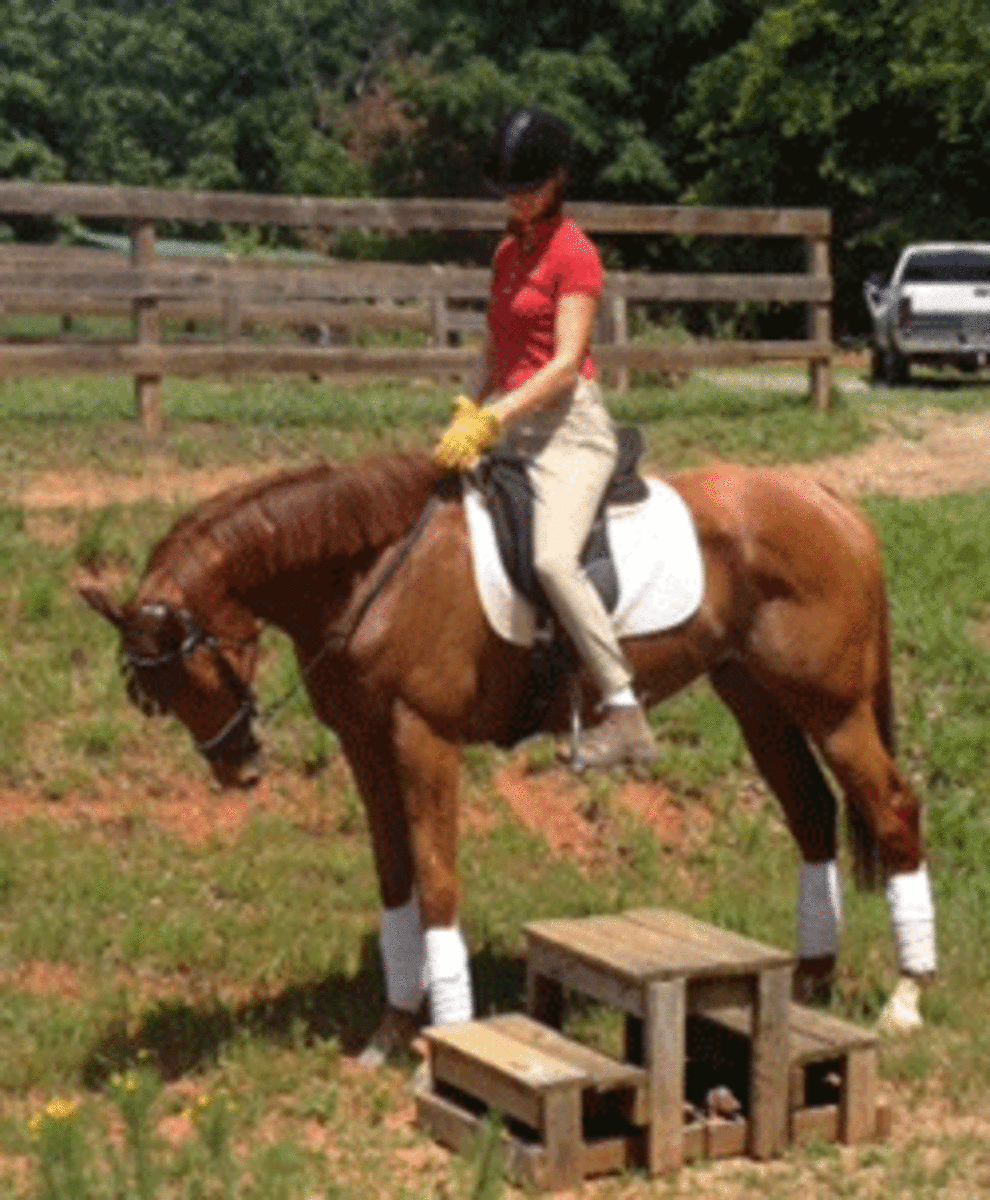
Would he understand my leg pressure to move off into a walk? He didn’t at first, so I verbally repeated the walk command he knew from the longe and he then struck off, moving forward in that particular, clean-strided walk he has, away from the block and into the arena.
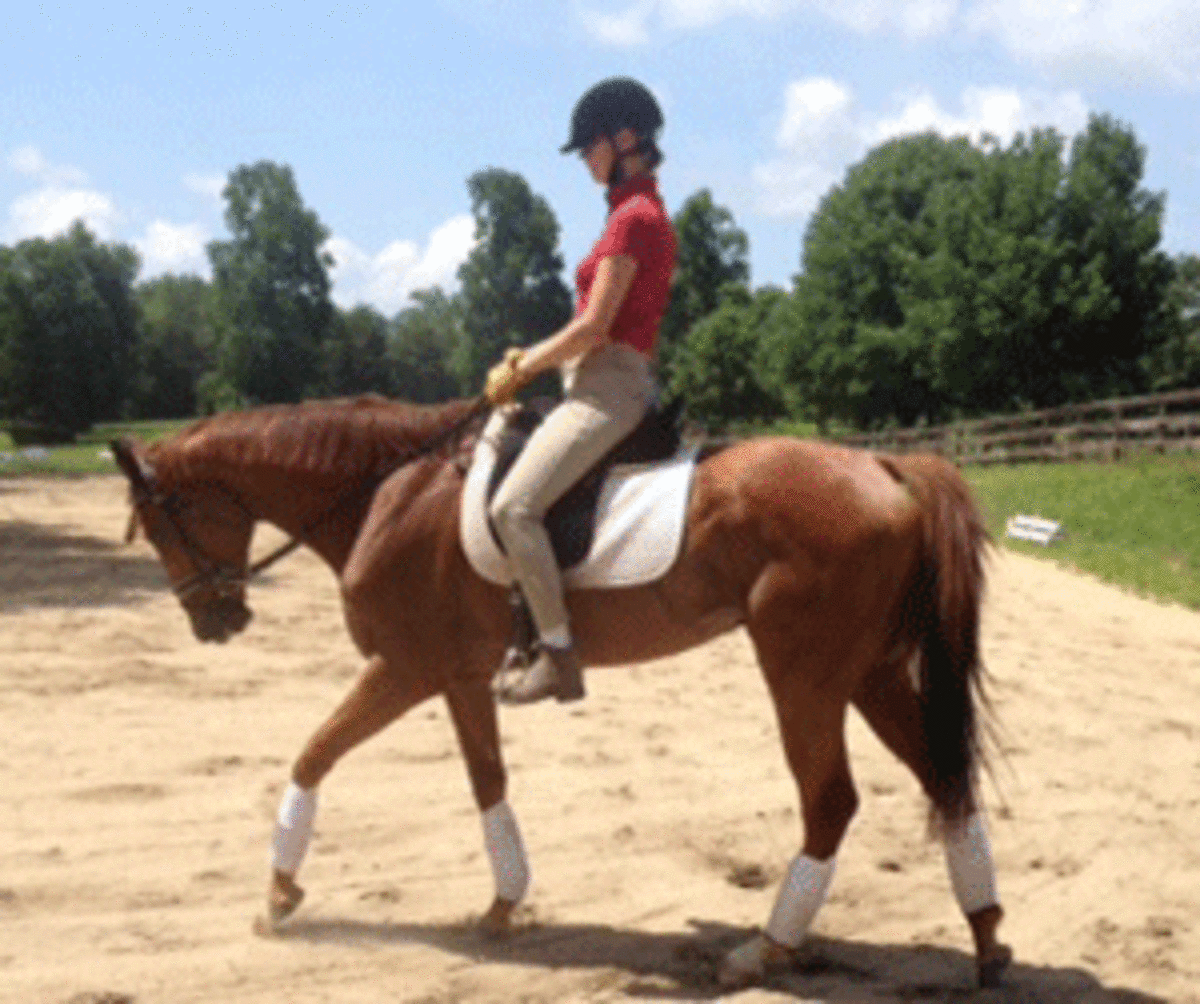
Because Forrest had already worked hard on the longeline and I want riding to be a pleasurable thing for him, this first ride was short and sweet: we walked only a little ways into the arena, turned and walked back and halted. And quite a nice halt if I do say so, myself! What a relief to get that first ride under our belt. He even stood stock-still as I dropped the stirrup irons and vaulted lightly from the saddle to the ground. It’s no guarantee that he won’t explode in the future, but for this ride, he couldn’t have been better. Go, Forrest, Go!
